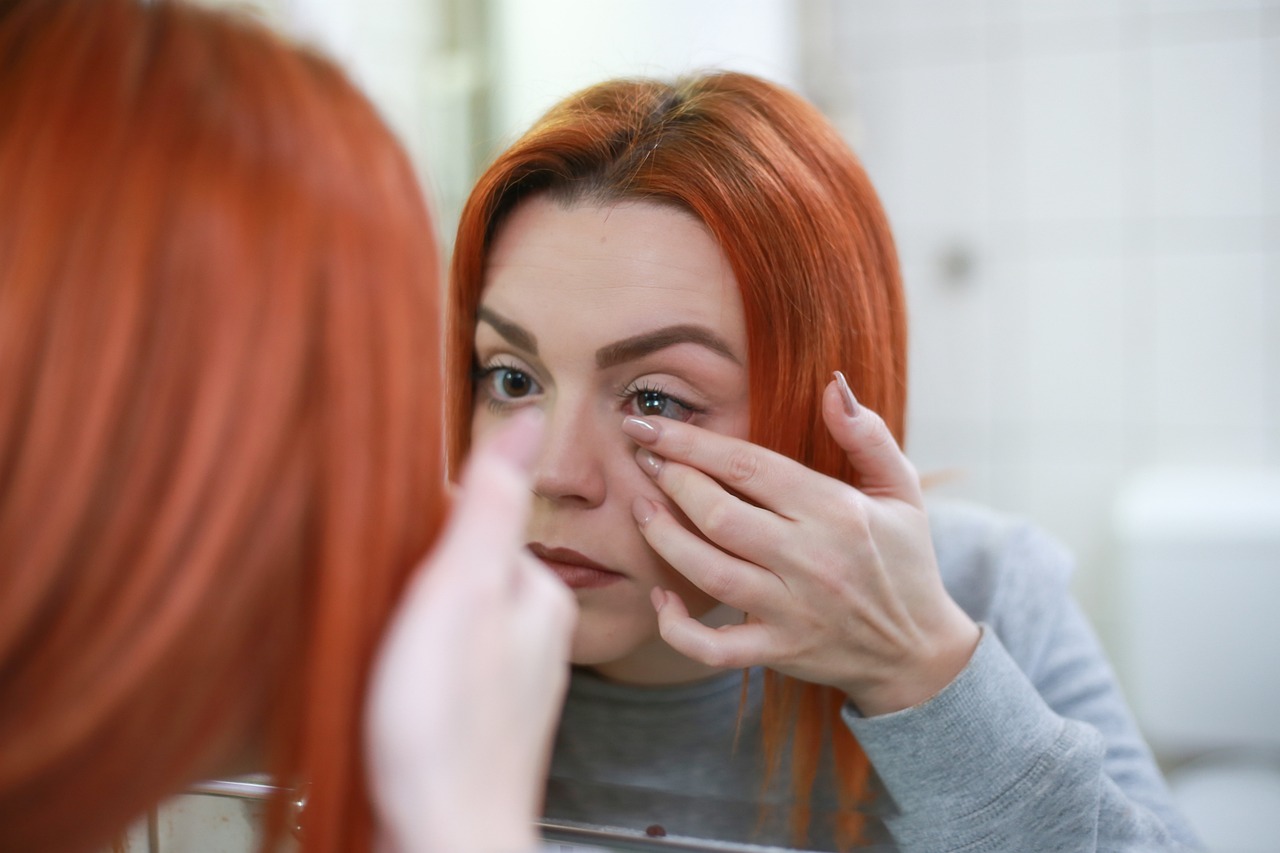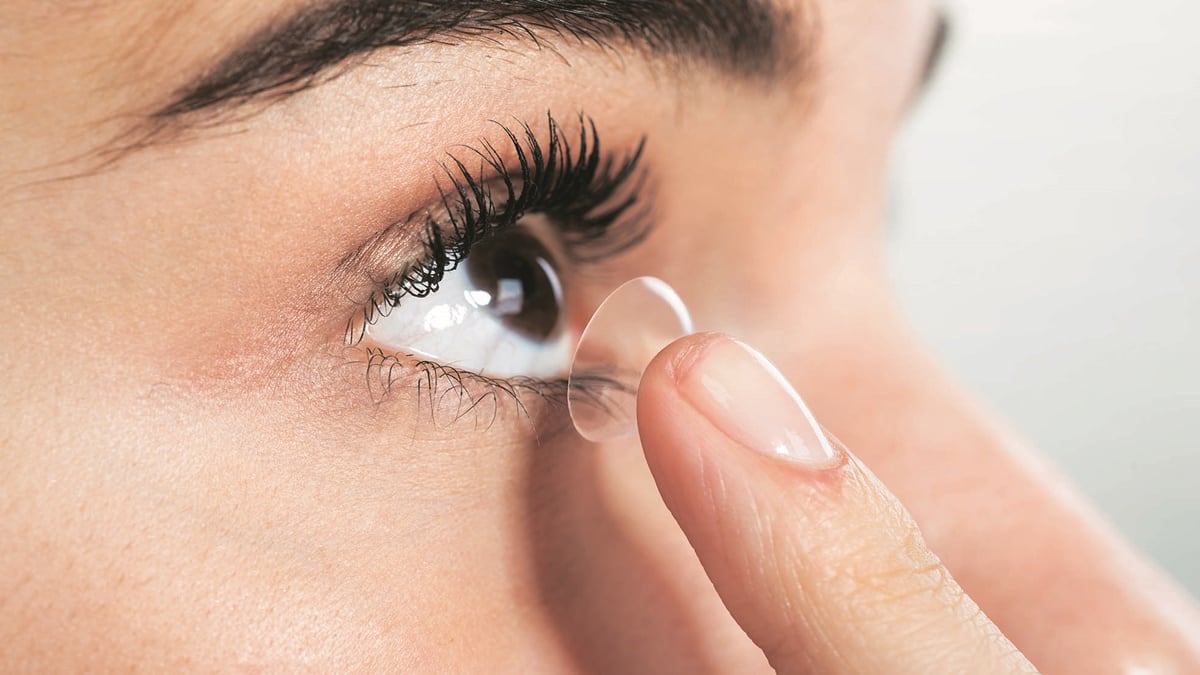

Contact lenses have recently been making headlines, but unfortunately, not for the right reasons. A new study conducted in the US has revealed that 18 popular brands of contact lenses contain alarmingly high levels of organic fluorine, which is a marker for ‘forever chemicals’ known as perfluoroalkoxy alkanes (PFAS).
PFAS are a group of approximately 14,000 chemicals used in the production of various consumer products to make them resistant to water, stains, and heat. These chemicals are called ‘forever chemicals’ because they do not naturally break down and have been linked to serious health issues such as cancer, liver disease, kidney disease, autoimmune disorders, and even foetal complications, as reported by The Guardian.
In another incident that drew attention to the potential risks of contact lenses, a TikToker named Doug shared his experience of wearing the same pair of contact lenses continuously for three years. This resulted in permanent astigmatism and a buildup behind his eyelids, according to reports. Although Doug eventually recovered after a year of exclusively wearing glasses, this incident has once again raised concerns about the safety of contact lenses.
Contact lenses have been a game-changer for many people, offering an alternative to glasses and improving overall quality of life. However, experts emphasize that there are certain risks and conditions associated with wearing contact lenses that users need to be aware of.
Dr Deepali Garg Mathur, principal consultant in ophthalmology at Max Multi Speciality Centre in New Delhi, explains, “Contact lenses have been very liberating for users of glasses. They were initially adopted for better cosmesis, wider field of vision, reduced glare, and fogging or clouding issues commonly experienced with glasses. Daily contact lenses, introduced in the 1980s, have truly transformed people’s lives. While contact lenses are often praised for their cosmetic benefits, they are not without their problems.”
One common issue associated with contact lens use is red eye, which can be caused by irritation or dryness. Contact lenses have hygroscopic properties, meaning they tend to absorb the natural tears of the eyes, leading to a dry environment and an increased risk of infection. Dr Mathur further explains that long-term use of contact lenses can result in the development of papules in the upper eyelid or giant papillary conjunctivitis (GPC). Prolonged use and exceeding the recommended duration can also lead to eye ulcers and corneal vascularization.
Recent reports have highlighted the potential harm of sleeping while wearing contact lenses. This behavior significantly increases the risk of eye infections, which can potentially cause permanent corneal damage and vision loss. Dr Saurabh Varshney, senior consultant in ophthalmology at Primus Super Speciality Hospital in New Delhi, warns that corneal infections, specifically microbial keratitis, become more than five times more likely when contacts are worn overnight, regardless of the lens type. Even occasional or accidental sleeping with lenses can heighten the risk of infection.
Normally, tears protect the eyes against infections by introducing new fluid and oxygen with each blink, maintaining the health of the cornea. However, contact lenses covering the cornea hinder these natural defense mechanisms. When lenses are worn during sleep, the corneas receive less tear fluid due to the absence of blinking, limiting the opportunity for tears to mix with the fluid beneath the lenses and flush out microbes, explains Dr Varshney. Additionally, sleeping with contacts or wearing them for extended periods reduces corneal oxygenation, potentially damaging the cornea’s surface and hindering its cell regeneration. This creates an environment where bacteria can thrive and develop into infections over time.
Considering the potential risks associated with contact lenses, many individuals wonder if LASIK surgery can be a viable alternative. Dr Priyanka Singh, consultant and eye surgeon at Neytra Eye Centre in New Delhi, confirms that LASIK surgery is indeed an effective solution for those seeking an alternative to glasses or contact lenses. However, she emphasizes the importance of a thorough pre-LASIK work-up to rule out any conditions that may complicate the surgery. Once a patient is deemed fit for LASIK, the chances of complications are minimal. Some patients may experience temporary dry eyes after the surgery, but this typically improves within one to two months.
While LASIK surgery offers a potential solution, it is essential to weigh the risks and benefits. Dr Rinky Anand Gupta, senior consultant in eye care/ophthalmology at Max Hospital in Ghaziabad, UP, reassures that loss of eyesight due to complications is rare. However, there may be some side effects such as dry eyes and transient vision issues like glare, which usually resolve within a few weeks or months.
Dr Mathur highlights the importance of responsible contact lens use. Many users tend to abuse contact lenses by exceeding the recommended duration of use, using them beyond their expiry date, and neglecting proper lubrication. For those who are not careful with their contact lenses, LASIK surgery may be a suitable option. However, for individuals who can adhere to the recommended regimen, contact lenses remain a viable choice.
In addition to proper contact lens use and considering alternatives like LASIK surgery, maintaining good eye health is crucial. Experts recommend consuming a healthy diet rich in nutrients like omega-3 fatty acids, lutein, zinc, and vitamins C and E to promote good eye health and prevent age-related vision issues. Quitting smoking is also essential, as it increases the risk of developing macular degeneration, cataracts, and damage to the optic nerve.
Other tips for maintaining good eye health include wearing sunglasses to protect against excessive UV exposure, using safety eyewear when working with dangerous chemicals, following the 20:20:20 rule (looking away from the computer screen every 20 minutes), and regularly visiting an eye doctor for check-ups.
For contact lens users, following a checklist of hygiene practices is crucial. It is important to wash and rinse hands thoroughly before handling lenses, clean lenses after removal, use recommended solutions for cleaning and storing lenses, clean the lens storage case regularly, avoid dropping lenses, blink regularly to keep the lens moist and clean, and seek immediate medical attention if any unusual symptoms or discomfort occur.
By being mindful of these guidelines and taking proactive steps to maintain eye health, individuals can continue to enjoy the benefits of contact lenses or explore alternative options like LASIK surgery while minimizing potential risks.
